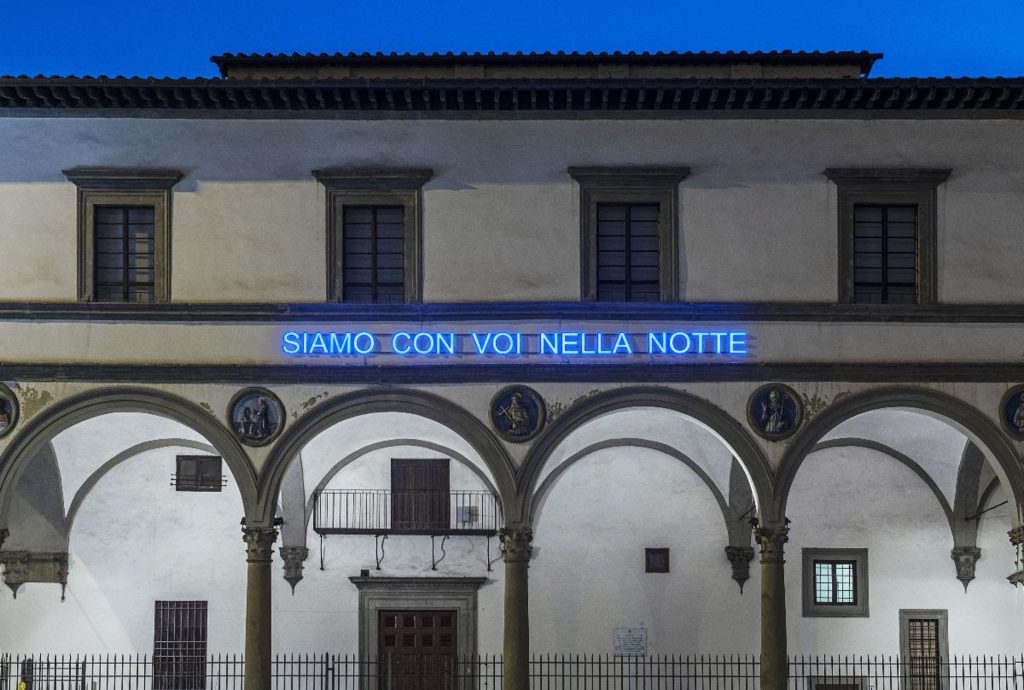
The women prison of Venice chosen as a place of humanity, the voices of the detainees as the sole guide through the spaces.
In this surprising corner of the world, artists and detainees join forces to express themselves in an unusual collaboration, where the reality of incarceration and boundless artistic vision meet and allure each other, with only eyes as witnesses to memory, due to the absolute prohibition of bringing electronic devices into the Casa di Reclusione Femminile della Giudecca (Women’s Prison). The exhibition Con i miei occhi (With My Own Eyes), the title of the Holy See’s National Participation in the 60th Venice Biennale, already exceptional in itself, hosted in a truly unprecedented location, has an additional exclusive element: the visit of the Pontiff, a first-ever in the history of the Biennale. “When I showed Pope Francis the project of the Holy See Pavilion for the Venice Biennale, he responded: ‘I will also go with my own eyes,’” revealed Cardinal José Tolentino de Mendonça, Prefect of the Dicastery for Culture and Education of the Holy See and Commissioner of the Pavilion. A female prison chosen as a meeting place, the voices of the detainees as the sole guide through the spaces, the denial of any electronic presence during the visit, a curation that skillfully combines sacred and profane, liturgy and popular culture, installation and suggestion, these are the ingredients of a visual and spiritual investigation that has aroused great interest since its presentation. Curated by Chiara Parisi, Director of the Centre Pompidou-Metz, and Bruno Racine, Director of Palazzo Grassi – Punta della Dogana, the Pavilion draws inspiration from a fragment of poetry that echoes an ancient sacred text and an Elizabethan poem.

The artists involved are Maurizio Cattelan, Bintou Dembélé, Simone Fattal, Claire Fontaine, Sonia Gomes, Corita Kent (the only non-living), Marco Perego & Zoe Saldana, and Claire Tabouret. The Pavilion is dedicated to the theme of human rights and the figure of the marginalized, inhabitants of marginalized worlds where our eyes rarely reach. The aim is to foster the construction of a culture of encounter, a central pivot of Pope Francis’s teaching. From this desire, intertwining stories emerge that may often seem foreign to us, but in reality concern us all, because they tell of the same hunger for love, the same desire for life, affection, the same restlessness for meaning – everything that art has always sought to reflect and represent.
The curator, Chiara Parisi, recounts: “The response of the detainees was immediate and passionate. It must be emphasized that they did not yield their physical spaces to allow the event to take place, but actively participate, guiding visitors to discover the works. Similarly, the artists overwhelmed us with proposals and enthusiasm, creating among us all a relationship of great trust, with the idea of entrusting ourselves to each other in a large unified joyful project.” Bruno Racine, the other curator, begins with a question seeking an answer: “How can we interpret today the concept of the historically transmitted ‘national pavilion’? The peculiarity of the Holy See, a unique State devoid of a national artistic scene, led us to experiment with a new formula. The Casa di Reclusione Femminile della Giudecca was the answer. Therefore, the choice of location is a manifesto, a statement. Artists of various origins and without distinctions of faith come together in this place to testify to a universal message of inclusion, collaborating closely with the detainees and enriching the project with their artistic and relational work.”